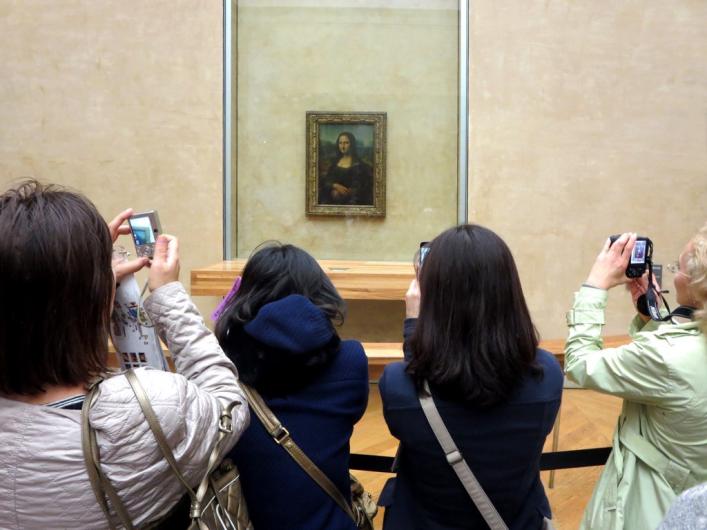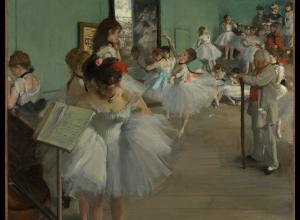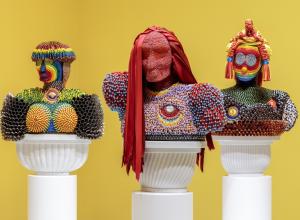
French newspaper Excelsior proclaims,"The Mona Lisa has returned," January 1, 1914.
Recently, the Mona Lisa was smeared with icing. Here are seven shocking things that have happened to one of the world's most famous paintings over the centuries.

The Mona Lisa under cake-smeared protective glass. Image from Twitter, posted by user @xqTTs.
Towards the end of May 2022, a thirty-six-year-old man appeared to smear cake and icing across the lower half of the legendary Mona Lisa. Social media videos taken in the moments after indicate that the vandal wished to call attention to climate change. “All artists, think about the Earth,” he said in French, “That’s why I did this. Think of the planet.” As the Mona Lisa has long been protected by museum glass, the painting itself was not damaged. Still, the incident made for an impactful photo-op.

The empty iron brackets at the Louvre that once held the Mona Lisa.
Many believe the 1911 Mona Lisa theft and the press storm that followed the event are responsible for its infamy today. Vincenzo Peruggia, alongside two accomplices, managed to steal the painting one night by simply hiding in a storage closet until the Louvre closed for the day. Peruggia reportedly wished to return the work to Italy, where he felt it belonged. He managed to hold on to it for two years before, during an attempted sale to a Florentine art dealer, he was identified and reported to officials.

Altaussee, May 1945 after the removal of the eight 500 kg bombs at the Nazi stolen art repository.
For decades, conflicting information circulated regarding the artwork's location during World War II and the Nazi occupation of France. While many believed it, alongside many other artworks, had been stashed in the Altaussee salt mine, no known war-time documents on either side of the conflict specifically mentioned the painting’s whereabouts. That is, until the recovery of papers belonging to Austrian double agents. These reports claimed the agents, “saved such priceless objects as the Louvre's Mona Lisa.” Eventually, the Louvre confirmed that the artwork had indeed been in the mine during this period of conflict.

The Mona Lisa in the Louvre's Salle des États and protected by a purpose-built, climate-controlled enclosure topped with bulletproof glass. Photo by Joe Parks.
While on a casual visit to the Louvre in 1956, Hugo Unjaga Villegas threw a rock at the legendary artwork. Villegas claims to have made the decision on a whim. “I had a stone in my pocket,” he said, “and suddenly the idea to throw it came to mind.” Though a small bit of paint was removed by the impact, the damage was easily repaired.

Close view of the Mona Lisa at the Louvre in 2015. Photo by David Stanley.
Earlier that year, an individual attempted to damage the painting with a razor blade but was ultimately unsuccessful. Reflecting on the frequency of such attempts in this period, Salvador Dalí mused that the painting had “a power, unique in all art history, to provoke the most violent and different kinds of aggressions.”

The Metropolitan Museum of Art, exterior, during the exhibition, The Mona Lisa by Leonardo da Vinci, February 7- March 4, 1963; view facing south showing crowds lined up on Fifth Avenue and on the front steps of the Museum.
On a rare global tour in 1974, the Mona Lisa was spray-painted at its Tokyo exhibition. Responding to the National Museum’s refusal to provide access to those with disabilities, Tomoko Yonezu aimed to damage the painting in protest. Though some droplets did manage to make contact with the work, reports following the incident confirmed that, thanks to restoration experts, no permanent damage was done.

The Mona Lisa in 2021, after the Louvre’s 2019 renovations of Salle des États. Photo by Ninara.
In 2009, a Russian woman managed to smash a teacup against the painting. It was, once again, undamaged thanks to its protective glass. Still, the event prompted many to call for greater security measures at the Louvre, some of which were eventually implemented. Since the incident, the masterpiece has been relocated to its own gallery and its protective glass has been upgraded.
In light of the recent May 2022 attack, perhaps even more security measures will be implemented.
Anna Claire Mauney
Anna Claire Mauney is the former managing editor for Art & Object. A writer and artist living in North Carolina, she is interested in illustration, the 18th-century, and viceregal South America. She is also the co-host of An Obsessive Nature, a podcast about writing and pop culture.![]()























